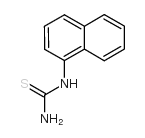Wartime rat control, rodent ecology, and the rise and fall of chemical rodenticides.
Christine Keiner
Index: Endeavour 29(3) , 119-25, (2005)
Full Text: HTML
Abstract
The story of how World War II stimulated the development of DDT, and the ensuing postwar dependence on such chemical insecticides, is well known. However, less recognition has been given to the wartime efforts to synthesize new rodenticides to fight rat-borne epidemics. Baltimore, Maryland served as the site for field tests of the powerful new compound alpha naphthyl thiourea (ANTU) from 1942-1946. This experimental campaign sparked debates over the efficacy of controlling rats via chemical warfare instead of environmental sanitation, which led to the ironic conclusion that urban rat control demanded an ecological, rather than technological, approach.
Related Compounds
| Structure | Name/CAS No. | Molecular Formula | Articles |
|---|---|---|---|
 |
Naphtox
CAS:86-88-4 |
C11H10N2S |
|
Effects of peripheral benzodiazepine receptor ligand Ro5-486...
2013-06-15 [J. Surg. Res. 182(2) , 277-84, (2013)] |
|
Fluorescein-labeled dextran concentration is increased in BA...
1998-09-01 [J. Appl. Physiol. 85(3) , 842-8, (1998)] |
|
Acute effect of endothelin-1 on lung oedema induced by alpha...
1996-06-01 [Pharmacol. Res. 33(6) , 375-8, (1996)] |
|
An unexpected interaction between NG-nitro-L-arginine methyl...
1997-02-19 [Eur. J. Pharmacol. 321(1) , 45-51, (1997)] |
|
Acute effects of pentobarbital, thiopental and urethane on l...
2002-03-01 [Pharmacol. Res. 45(3) , 235-9, (2002)] |